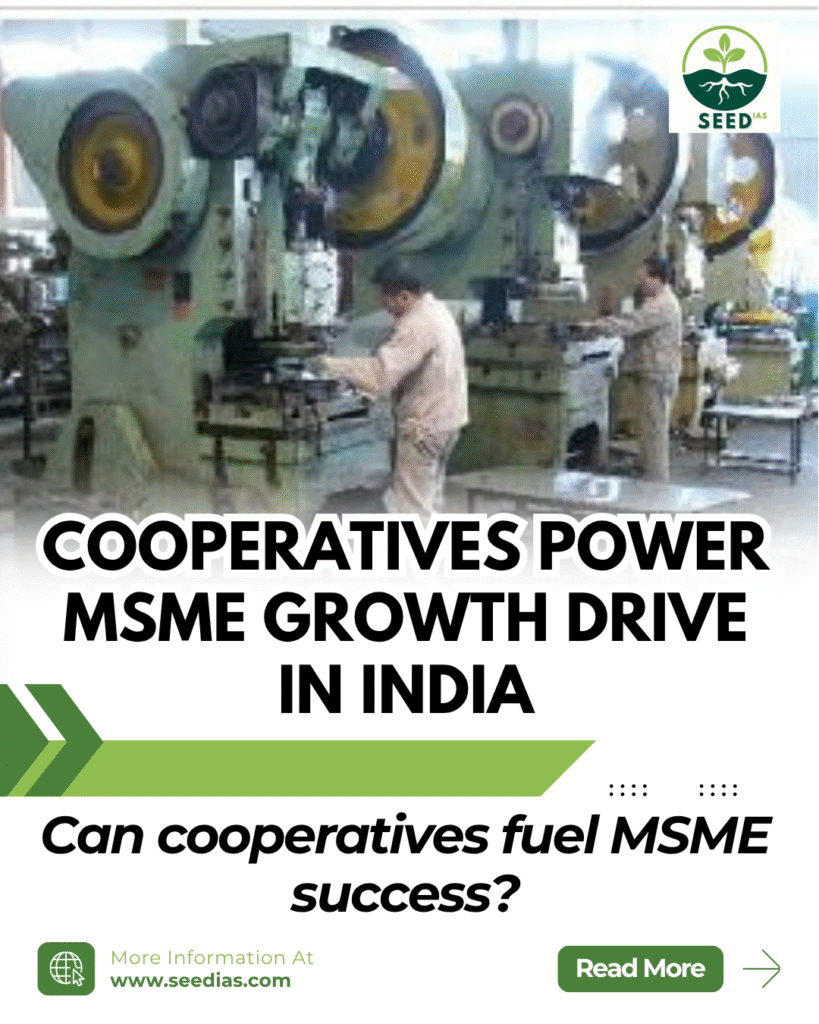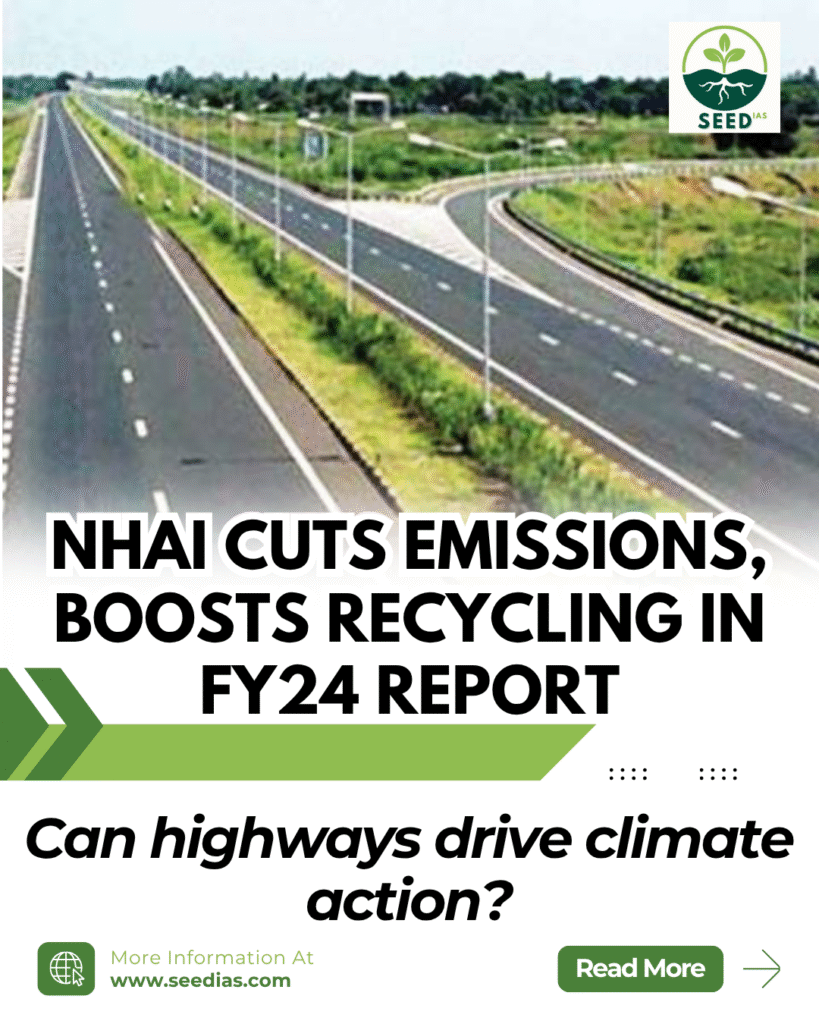Why in NEWS
India observed the International Day of Cooperatives (5th July 2025) while celebrating four years of the Ministry of Cooperation. The spotlight is on leveraging cooperatives and schemes like PM Vishwakarma to empower artisans and boost MSMEs.
Key Concepts and Definitions
| Term | Description |
|---|---|
| Cooperative | Member-owned enterprise aiming to meet common economic, social, and cultural needs |
| MSME | Micro, Small, and Medium Enterprises; critical for employment and economic growth |
| PM Vishwakarma Scheme | Central scheme to support traditional artisans with finance, skill, and market access |
| PACS | Primary Agricultural Credit Societies; grassroots cooperative banking units |
| Sahakar se Samriddhi | Vision behind the Ministry of Cooperation to drive prosperity through cooperative models |
How Can Cooperatives Contribute to Boosting the MSME Sector in India?
| Contribution Area | Details |
|---|---|
| Financial Empowerment | Lower credit cost (5–7% under PM Vishwakarma), shared machinery, reduced production costs |
| Market Access | Collective branding, certifications, better reach to domestic and international markets |
| Technology & Skill Development | Cluster-level training, digital and automation adoption |
| Government Scheme Integration | Cooperatives as delivery agents for schemes like PM Vishwakarma |
| Inclusive & Sustainable Growth | Women empowerment (e.g., Lijjat Papad), rural development, circular economy initiatives |
What are Cooperatives in India?
| Aspect | Details |
|---|---|
| Overview | 800,000+ cooperatives across agriculture, credit, housing, fisheries, dairy |
| Legal Evolution | 97th Constitutional Amendment (2011) recognized right to form cooperatives (Article 19) |
| Governance Reform | Multi-State Co-op Societies (Amendment) Act 2022 added Election Authority & Rehab Fund |
| Vision | “Sahakar se Samriddhi” – prosperity through cooperation |
Key Contributions of Cooperatives
| Sector | Impact |
|---|---|
| Employment | 29 crore members; 13.3% of India’s direct employment |
| Agriculture | 15% of short-term agri-credit, 30% sugar output, 35% fertilizer distribution |
| Financial Inclusion | 20% of cooperatives in banking, enabling credit access in rural areas |
| Food Security | Amul, IFFCO, NAFED ensure food processing, input distribution, and exports |
| Women Empowerment | SEWA, Lijjat Papad promote self-reliance among women |
Notable Cooperatives in India
| Name | Function |
|---|---|
| PACS | Rural credit delivery via NABARD and banks |
| AMUL | Dairy cooperative responsible for India’s White Revolution |
| IFFCO | Major fertiliser cooperative aiding agriculture |
| HOPCOMS | Farm produce marketing cooperative in Karnataka |
| Lijjat Papad | Women-run cooperative for papad production |
Challenges in Cooperatives Empowering MSMEs
| Challenge Area | Issues |
|---|---|
| Misconceptions | Viewed as politically driven; low awareness of cooperative models |
| Financial Constraints | Weak cooperative banking sector; limited credit history |
| Complex Regulations | Overlap of laws, GST issues, bureaucratic delays |
| Digital Lag | Low adoption of e-tools and platforms like ONDC or GeM |
| Governance Deficit | Poor transparency, limited audits, weak internal capacity |
Measures to Strengthen Cooperatives for MSMEs
| Focus Area | Recommendations |
|---|---|
| Policy & Regulation | Tax breaks, public procurement prioritization, simplify GST, align with National Cooperative Policy |
| Finance & Credit | Expand PACS for MSMEs, connect with MUDRA, NABARD, promote cooperative fintech |
| Infrastructure | Digital tools, Common Facility Centers, logistics cooperatives |
| Branding & Market Access | CoopMade labels, ONDC integration, export clusters |
| Awareness Campaigns | “Cooperatives for Atmanirbhar MSMEs”, mobilize SHGs, highlight success stories |
In a Nutshell
Memory Code: “COOP-FLOW”
C – Credit access
O – ONDC digital push
O – Outreach via Vishwakarma
P – Production synergy
F – Financial support
L – Livelihood generation
O – Online branding
W – Women-led empowerment
Prelims Questions
- Which Constitutional Amendment recognized the right to form cooperatives in India?
A. 74th
B. 86th
C. 97th
D. 101st - PACS are primarily associated with:
A. Urban housing cooperatives
B. Dairy product marketing
C. Agricultural credit delivery
D. Textile production units - The PM Vishwakarma scheme primarily targets:
A. IT Startups
B. Traditional artisans and craftsmen
C. Export-oriented units
D. Large-scale manufacturing firms
Mains Questions
- Discuss how the synergy between cooperatives and MSMEs can support India’s vision of inclusive and sustainable growth. (GS III – Economy)
- Evaluate the steps needed to reform cooperatives in India to function as efficient intermediaries for MSME development. (GS II – Governance)
Prelims Answer Key
| Question No. | Correct Answer | Explanation |
|---|---|---|
| 1 | C | 97th Amendment added Part IX-B and recognized cooperative rights |
| 2 | C | PACS are grassroots-level agri-credit institutions |
| 3 | B | PM Vishwakarma supports artisans and traditional craftspeople |
















